intentional buy reflection: quarter 1, 2024
revisions to my rules, reflections from quarter 1, and an item-by-item analysis
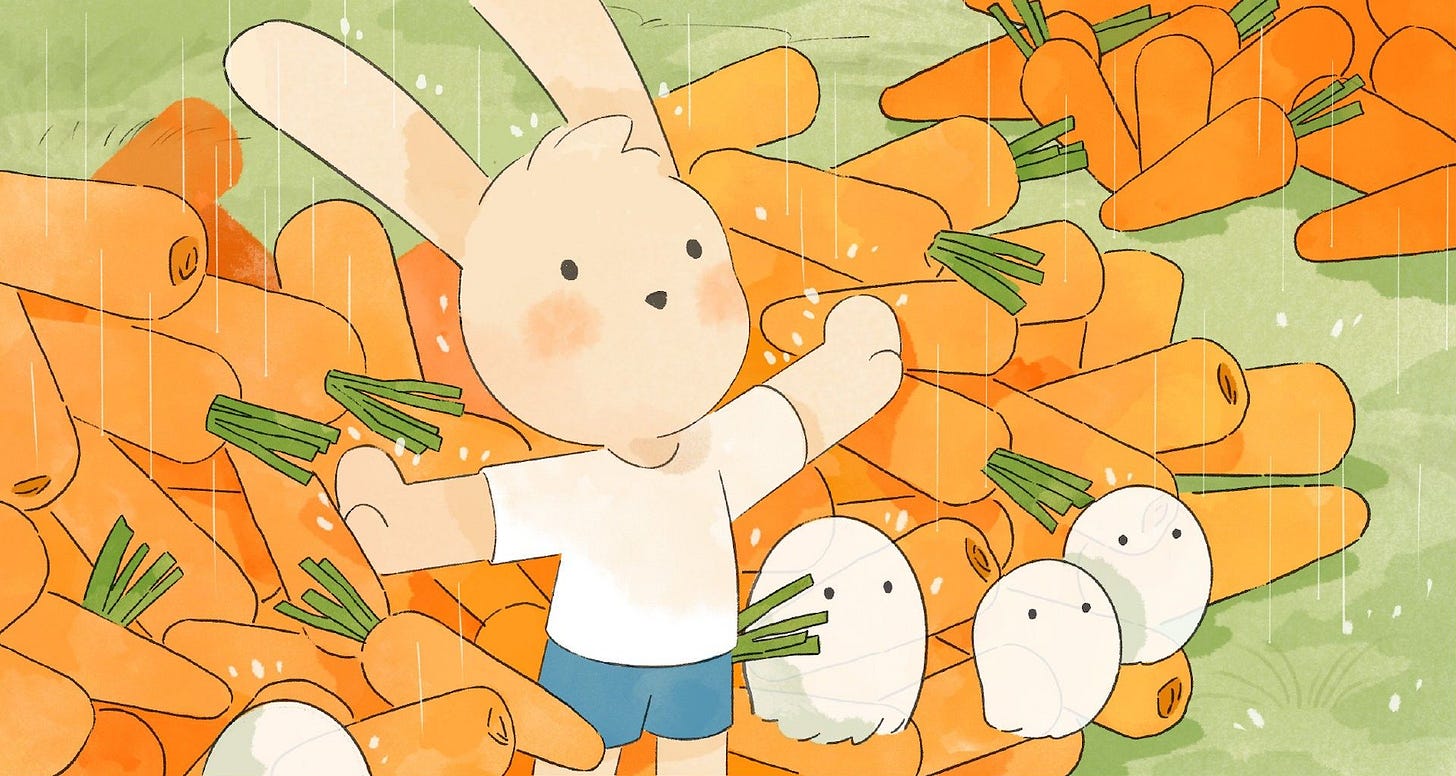
If you’ve been following along my Intentional Buy journey, which for those who are new, I’ve taken the concept of a “No/Low Buy” and shifted its focus on intentional instead of restrictive spending, then you probably know how the first quarter was a bit difficult in terms of my non-essential spending. I will divide this post into: 1) a review of all my purchases in Quarter 1, 2) revisiting my rules and amending/adding new, and 3) resources and support if you would like to join me in this challenge.
This section contains all the items I purchased or sold. I have also decided to keep all items that I am not able to recoup my financial losses (regardless of how small) in this non-essentials list.
reflection of the items i kept
MD Paper A4 Journal ($25)
I actually purchased this spontaneously in January, and it’s one of my favorite purchases on this list, mainly because of its utility. It’s been nice to start fresh, since my last journal was one I purchased in 2020 and began to contain a mishmash of everything — work and school notes, in addition to my innermost thoughts. However, I am a bit worried about the journal getting dirty since the cover is a light beige and a paper-like finish.
Green floral washi tape ($5)
I don’t own any washi tape, and I really liked how Bumble Beans1 would use her tapes as decor accents on in her journal or letters — it inspired me to purchase one I found at a local Japanese stationary store (same place where I purchased the journal). Once I use this all up, I’d love to purchase this one!
Custom font ($4.14)
I love using fonts created by other creators because it adds an element of unique-ness to my content. However, the downside is that it usually costs money. This specific font is what I’ve been using for my larger titles on Instagram (the “Hi, I’m Beans” font below).
Sézane Betty Cardigan ($170)
This was part of my first ever Sézane purchase, and my first look into what this brand was all about. I wish I purchased from their brand years before because people have mentioned their quality has gone downhill after gaining popularity on social media (it’s always TikTok ruining it for us). The Betty Cardigan has been a staple in my closet ever since I added it. I have the Mottled Beige colorway, and it’s allows me to look put together while also feeling very comfortable! I also love how it’s 100% merino wool.
Sézane Leontine Cardigan* ($125)
This is just alright. Everyone on YouTube and Instagram proclaimed this item as a staple, similar to the Betty, but I personally don’t like the way it looks on me. I wish I were more realistic with my evaluation of this piece during the return window period.
Sézane Auguste Jacket ($235)
This jacket is so cute and cozy. It’s the definition of coquette grandma, if anyone were to ever make that a thing (yes, hi it’s me). I purchased this in one size larger than my usual, so I’m able to wear something bulkier (if need be) underneath.
Everlane The Dream Pant in Tiger’s Eye ($88)
I feel like I talked so highly about these pants on my stories when I first purchased this, and I still stand by this. It’s delightfully comfortable and looks quite professional (for someone who works in a non-corporate environment).
Not Perfect Linen Puglia Straight Cut Linen Pants ($103.50)
I had a love/hate relationship with these pants because even though they were extremely comfortable, they looked a bit odd on me in that I felt like I was giving “Minecraft character” energy, a direct quote by Mr. Beans. It’s true, but I can’t bear to give this away considering how insanely comfortable it is. It’s lightweight and stretchy at the waist. I just wish they looked more professional, but it is what it is. I still wear them to work though (perks of working in academia, not corporate).
Not Perfect Linen Doolin High-Waisted Linen Pants* ($110.70)
These were too tight at the waist for me, and they looked frumpy! It’s because while high-waisted, the thigh area is a bit baggy, and it cinches down at the ankle. Not a cute balloon. I really wanted to return these, but FedEx quoted my shipping label to Lithuania to be $210. No thank you.
Everlane The Supima Micro-Rib Crew in Navy ($40)
This was inspired by my desire to own more tight(er) fitted shirts, since I only ever owned loosely fitted ones. These are great, solid staple — not much to say about them except for the fact that I wear this at least twice a week.
Everlane The Supima Micro-Rib Crew in Black ($40)
Loved the navy so much I had to get it in black of course. I ordered a bunch of colors, but everything else didn’t look good on me except for the black. For those who are interested, don’t get the white version! It’s see through!
Hestia Magic Candle Warmer ($64.96)
I use this every day, so cost per use is pretty darn low right now. This did break my Intentional Buy rule of no Amazon purchases.
Ear piercing + 14K Gold Studs ($201.68)
I wanted to cry during the piercing because it was so insanely painful, but I pulled through. Ridiculously expensive, but I wanted to go to a place rated around 4.8-5 stars on Yelp because I dealt with an ear infection as a result of an ear piercing when I was in middle school.
reflection of the item i sold
Not Perfect Linen Short Sleeve Midi Mama Linen Dress* (Paid $111.60, Sold $57.56, Net Loss $54.04)
I’m genuinely happy that someone ended up purchasing this dress. I wish I didn’t modify the dress, because I might have ended up keeping it instead of selling it at a loss, but it is what it is! Lesson learned—purchase with the intent of keeping or reselling at a loss, not returning.
*Items I regret purchasing
I will admit, seeing that I’ve already made 2 “bad” purchases is pretty humiliating, especially since I’m sharing this information with everyone after declaring that I’ve decided to embark on this challenge. I’ve talked on and on about intentional buying, using a wishlist tracker, and creating foolproof systems to ensure that I don’t fail. Well, I did. And all I can do is learn from my mistakes and move on.
Here are all the worst purchases I made this quarter:
Sézane Leontine Cardigan ($125)
Not Perfect Linen Doolin High-Waisted Linen Pants ($110.70)
Not Perfect Linen Short Sleeve Midi Mama Linen Dress (Paid $111.60, Sold $57.56, Net Loss $54.04)
And here are four things I’ve learned:
Stop purchasing pants online. When I look at my return history, I see that a majority of the clothing returns are trousers/pants. I know that I’m lacking work appropriate pants in my wardrobe, but I acknowledge that I went out of control this quarter. My rule for the rest of the year is to try clothes (not even just pants) in person or purchase them secondhand. After engaging in conversations with the Beans community about how terrible it is to return items back to a company because most of the time, they don’t get resold/repurposed, I realized I’ve been promoting this habit of buying and returning, when in reality, I should be purchasing intentionally, and if it doesn’t work out, resell on Ebay or gift it to a friend or family member.

all the items i’ve returned so far (notion no/low buy template) Get creative with what I already own. I find that one of my biggest struggles when I buy items is that when I’m on a roll, for example, if I suddenly have a need to revamp my capsule wardrobe, I’ll go all the way until I feel like it’s nearly perfect. I’ve unlearned my way out of this mindset throughout the month of March, and will now focus on selling items that I dislike from my closet without adding new items impulsively. Also, one of you sent me the loveliest message about how you dyed your cardigan a different color, to make it feel like you now own a new piece in your wardrobe!! What a clever, sustainable win!!!
Clothing items need to be maximum coziness, otherwise I just won’t wear it. This involves texture of the fabric (can’t be too itchy, scratchy, thin to the point where it snags on everything) and fit (I should be able to dance around and feel comfortable). Everything I categorized as “worst” had problems with fabric or fit.
If something doesn’t work out, it’s not the end of the world. I had a lot of guilt when I realized I wanted to get rid of the items listed above — I was mad at myself for even making these purchases in the first place, and that if I took the time to really think about whether I wanted them or not, I probably would have refrained from purchasing them. But I did realize that if I didn’t make the mistake now, maybe I would’ve made the same mistake some time in the future. I tried the brand, realized the qualms I had with certain items, and I now know to purchase with the intent of keeping it instead of having hopes of being able to return it. It’s also nice how I’m able to resell these items. It might not be as easy as selling an Lululemon item (this brand has an insane resell market!), but if I got one item to sell, I don’t doubt that the others will find their buyers one day. Plus, reselling it will decrease the percentage of money spent in the “worst” category, so that is an incentive for me to try to list these well!
To spend $912 on clothes in 3 months is excessive and beyond what my income could handle. That’s a whopping 10% of my combined net paycheck income in the past 3 months. Besides clothing, the other category spends aren’t a problem for me, since they’re either very low in spend or low in volume.
These were my original rules that I posted three months ago. I have broken many of these rules throughout this first quarter (cries) — we’ll get into that in this section.
No more than 36 purchases.
On track, but not if you count by the 3 items per month thing. Currently at 14 items. Someone, please virtually slap me if I hit 36 before the end of this year. I’m strict on this rule, and I do not want to end up like how I was in 2023 where I purchased 100 items.
No Amazon.
This was a fail. I ended up purchasing the top down candle warmer from Amazon because I quite literally could not find a decent warmer with good reviews anywhere else. I also purchased saline spray for my ear piercing because I couldn’t find this specific one anywhere else (that wasn’t exorbitantly priced). I still have no idea how to navigate situations like this where I have a need but I can’t find it elsewhere. Any tips appreciated here!Gift experiences or something homemade/edible instead of a physical gift.
Mr. Bean’s birthday was in January, and I took him out for a pottery class, a beach walk, and brunch! I paid for my friend’s meal the day before his birthday. Besides that, there weren’t other festivities/celebrations that required some sort of gift giving.
Explore secondhand instead of buying new.
Big fail for this one. Everything I purchased was brand new and I know it was because of the new year, new [wardrobe, journaling habits, beans aesthetic] mindset. That’s gone now, and I do want to take the time to learn the beauty of thrifting. Throughout my entire life, my mom has always told me how disgusting thrifting was, which is probably why I rarely go thrift shopping. I recently went to a Crossroads with Bumble Beans and felt quite icky trying on some clothes — if anyone has any advice on this, please let me know!Pre-fund all non-essentials.
Big fail again. I purchased everything without pre-funding it in YNAB.Repair first.
There actually is a sweater that I wanted to repair, but I also realized I don’t like how I feel in it (I wear it for comfort, but I don’t feel confident at all in it). Rather than repairing — quite an easy job since it’s a small hole in the neck area — I’m selling it, while of course, being transparent about this on the listing page.
Stop swapping a product out with an eco-friendly version if it’s lower quality.
I didn’t really have an issue with this rule, only because I haven’t really found the urge to use more eco-friendly cleaning products.
No more experimental items.
I… definitely failed with this one. I initially wrote this in the context of beauty or skincare, but I realized I could also apply this to clothes. The Not Perfect Linen is an excellent example of experimenting with 1) a company located overseas, in Lithuania and 2) customizing a dress from a brand I’ve never purchased from in the past. If that’s not experimentation, I don’t know what is. I want to be open to trying out new brands, but I would rather stick to brands that have a good return policy (not to abuse the policy but if I’m a first time customer I’d at least like that flexibility) or brands that my friends recommend and have positive things to say about their experience with it.
Limit subscriptions (no more than one subscription per category)
Success! My current subscriptions in each category are: Sunsama (productivity), Spotify (music), Canva (design), and Google One (document storage). I don’t pay for television streaming subscriptions, since my friend is letting me use his for free.
Are there any rules I want to amend, remove, or add new to the list?
I would like to add the following rules:
Resell or re-gift instead of returning. I guiltily admit that I have taken advantage of return policies in the past, not realizing that this practice may be terrible for environment even if it is good for my wallet. It is a selfish way to engage in consumer-based practices, and after some of you guys sent some articles my way, I wanted to see if there were any researchers looking into this in a more systematic way. I found an interesting qualitative research study that was published quite recently (2023!) that employed semi-structured interviews to gather data and more in-depth understanding on barriers (e.g., returns) to adopting environmental sustainability practices2. The most fascinating part of this study is that the participants (or retailers) had limited data on returned items based on their return paths, and more importantly, unaware of the ecological impact that each return has. A more important question to propose is: how can these companies quantify the environmental impact of the returns? Economically, it is much easier way to calculate, as in-person store returns are more cost-efficient than mail-in returns. For those who are interested, I highly recommend reading this paper! It is open access (free!) and may elicit some brainstorming on your end to think about the implications of return paths and practices in light of not only sustainability, but also profitability.
I would like to amend the following rules:
Explore secondhand instead of buying new.Purchase furniture, clothing (excl. undergarments), and electronics secondhand only. I wrote this rule quite leniently but after taking the time to scroll through Marketplace at least once per day (just to see what’s out there, not for the purpose of actually purchasing), I realized I could practically find anything I wanted and someone will probably be selling it near me (if not, a maximum 1 hour drive away). I always chased the most convenient option, which would always be to purchase new, directly from the website.No Amazon.Any Amazon purchase, even if it’s deemed essential in its inherent nature, will be categorized as non-essential. This rule was tricky, because even though I meant to say “No Amazon completely”, it was still under the list geared towards non-essentials, so I ultimately convinced myself that it was okay to not list an item if it truly was necessary for my health, wellbeing, or productivity needs. An example is is the NeilMed saline spray that I purchased for my ear piercing. While the piercing was objectively non-essential, I later categorized this as essential because I would be at higher risk of a nasty ear infection (round 2) if I didn’t own this. I could have purchased this elsewhere, but I needed it ASAP and couldn’t find it at a local retailer like Target or CVS. But I realized the issue was failing to plan for the ear piercing ahead of time, because maybe if I did, I would have made the order for the saline spray from their original website instead of Amazon and it would have arrived on time.Repair first.Attempt to repair or sell before giving it away for free. This might be a controversial rule, but I realized that I’ve donated a bulk load of items in the past, simply because I was too lazy and wanted instant gratification of removing items from my home. “Giving it away for free” includes sending the item to a corporation like Goodwill (which I haven’t done in a very long time), donating it to a local shelter or church (better option), giving it away on my local no buy Facebook page (unfortunately, the group I’m part of is fairly new and inactive, so it’s been difficult to give away items), or listing it for free on Facebook Marketplace (I do worry about my safety and it is a hassle, but this applies to selling items as well). Considering these options, repairing or selling are the most optimal, because 1) I can extend the usage of my item for a certain cost, or 2) the item will exist in a new home, and when people spend money on things, they tend to be more likely to use it as compared to if they received it for free. The second point comes from my experience with dropping no-buy items off — there have been multiple occasions when I’ll see the person’s garage filled to the brim with items, and while they might not be junk, it feels like they are collecting as many items they can find, for free.
I would like to delete the following rules:
No more experimental items.When I initially wrote this rule, I wanted to stop buying from brands I haven’t heard of before, especially if it’s a newer company with few reviews. However, I realized the issue lies in the idea that smaller companies have less flexible return policies, and because I want to stop returning items, I want to learn to be okay with the occasional oopsies, whether that may be trying to figure out how to utilize a product or re-sell it. In the most optimal situation, I do end up loving the item and recommending it to all my friends and family! Some experimental successes include the Thuma bed frame (hefty price, but well worth it), Osume keycaps (they are a beauty!), Gantri lights (the glow that emanates from the light is beautiful), and Sparta Candle Co (this is actually Bumble Beans’ experiment, and I’m so glad she bought a soap for me on my birthday because I am now a life-long supporter of this brand).
After amending the changes above, here are my updated rules as of April 2024.
Truth to be told, I learned about no/low buys from YouTube (forgot the exact name of the creator), and began rifling through related content on all platforms of social media. For the easiest time, if you don’t want to search resources up yourself, here’s my personal list of favorite creators or platforms that inspire me to pursue spending challenges like these, and live a more curated, intentional life.
r/nobuy — I love when people write about their monthly updates! For example, this one, or this one! There are also lots of folks who post about their rules, whether it be a month-by-month basis or a yearly set of rules.
r/minimalism — This subreddit doesn’t talk much about decreasing impulse buying, but moreso about living a simpler life. It’s quite inspiring! I love discussions that challenge society’s preconceived notion about minimalism — for example, this post that talks about owning items you don’t use frequently!
r/declutter — As a decluttering fanatic (borderline addict), I love reading about people’s declutter stories. It culls my mind in the most satisfying way! There are some great posts on gaining inspiration to declutter, like this one!
✮⋆˙YouTube
ecofriend .lia — “creating a slow but beautiful life without excess stuff.” Oh, how I am absolutely obsessed with Lia’s content. She truly lives a minimal life and it shows in the way she carries herself in her videos. I love watching her wardrobe-related videos, such as this one!
Minimal Ease — “I am a working mom who has curated a simpler way of living.” I recently discovered Becky’s channel earlier this year, and I think I’ve watched every new video she’s released since subscribing (this is rare as I have a short attention span). She does the most satisfying declutters, and my favorites are her “Take it Out Tuesday” videos!
Paper Town Home — “Slow(er) living. Minimalist homemaking. Simplicity parenting.” Moms who make videos on simple living are true powerhouses in this society. Her home, decluttering and wardrobe content are so satisfying to watch! Home declutters are my favorite type of videos to watch.
Grace Nevitt — “no-buy tips, minimalism, and lifestyle vlogs! 💗” Grace is so down-to-earth and relatable, and after coming across her YouTube channel, I knew I had to also follow her on other socials. Her minimalism, decluttering, capsule wardrobe, and no buy related videos are my favorite. Plus, she has a Substack:
!Sagelife Minimalism — “MINIMALISM | SLOW LIVING | HOME INTERIOR | PHILOSOPHY | LIFESTYLE". This channel shows a more extreme form of minimalism, and interestingly enough, I find it quite enjoyable as compared to out of touch (the latter, I feel with some creators). I love watching videos related to capsule wardrobes (she lives with only 33 possessions!) and her home tours.
✮⋆˙Podcasts
The Minimalists Podcast — This is clearly the most obvious choice of podcast, and I wish I had more podcast recommendations for this newsletter but I haven’t been listening to as many as I’d like to these past couple of years.
✮⋆˙Articles
The Last Vegas Rules II: Stuff Science — I discovered this article written by
(writer and consultant with a PhD in control theory from the University of Michigan) recently, from a Reddit post (thanks r/declutter) and wow. Wow. Everyone who’s on a journey to achieving a more simple, minimal, and intentional life must read this, because it’s written in the most systematic, pragmatic, and blatantly rudimentary form. This is especially a direct request to you if you aren’t able to resonate with Marie Kondo’s or Fumio Sasaki’s philosophy in owning less I assure you, you’ll resonate deeply with Venkatesh’s.
Instagram, where I’m the most active and post stories every day about my life, every non-essential purchase I make, my Goodreads/Letterboxd reviews, my progress with my academic papers goal, and more!
I use Wealthfront for my high yield savings account, and if you use my link, we both get 0.50% added to their current APY for the first three months! The base APY at this moment is a whopping 5.00%.
All my Notion templates can be found and purchased here. Follower favorites are the Capsule Wardrobe Tracker and Digital Goal Setting Toolkit.
Here’s my Bento for all my links consolidated into one webpage!
Till next week,
For those who are new, I met Bumble Beans on Bumble BFF last June, and she has now become one of my closest friends. I talk about her a lot, which is why I’ve given her this name.
Zhang, D., Frei, R., Wills, G., Gerding,E., Bayer, S., & Senyo, P. K. (2023). Strategies and practices toreduce the ecological impact of product returns: An environmental sustainability framework for multichannel retail. Business Strategy and the Environment,32(7), 4636–4661. https://doi.org/10.1002/bse.3385






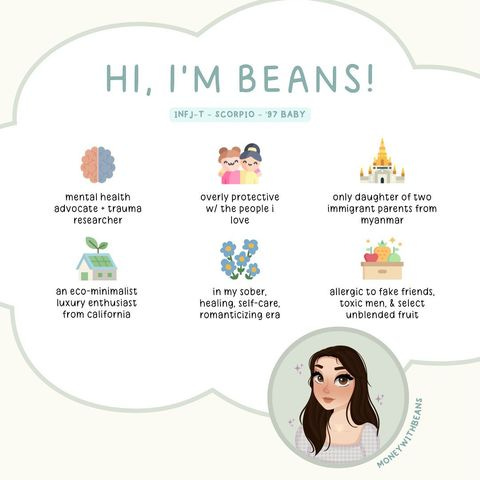


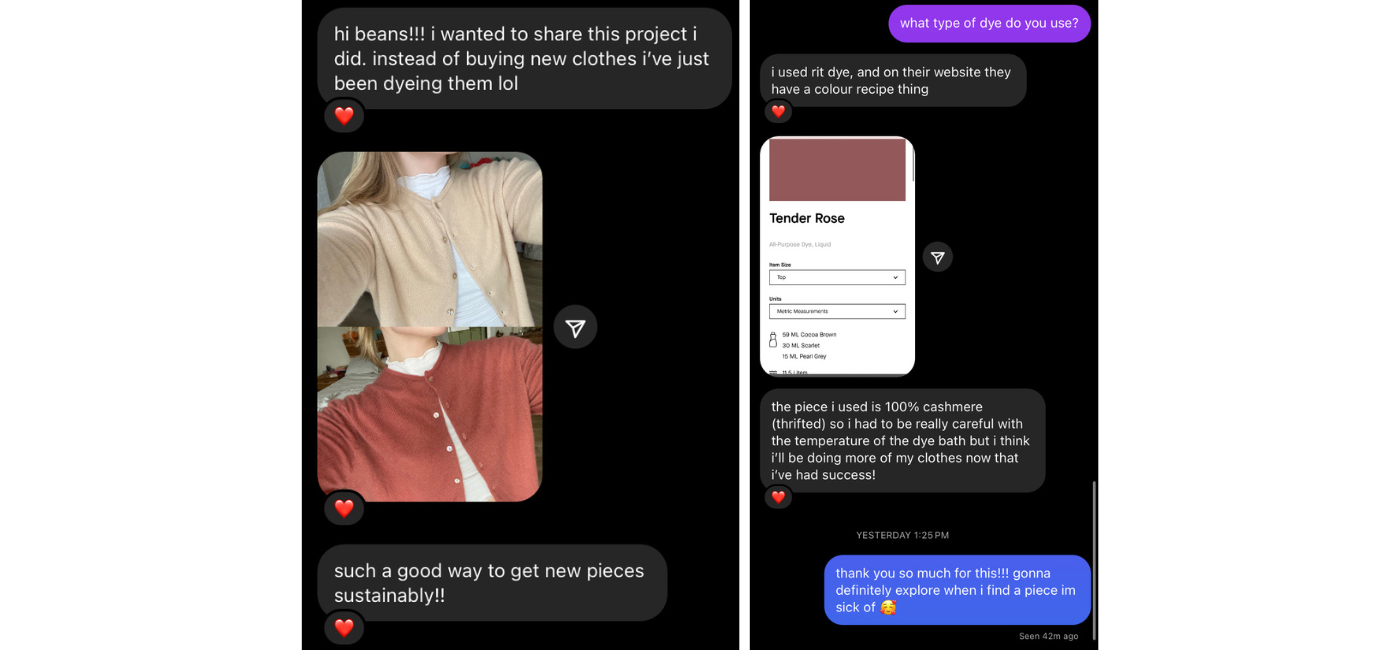
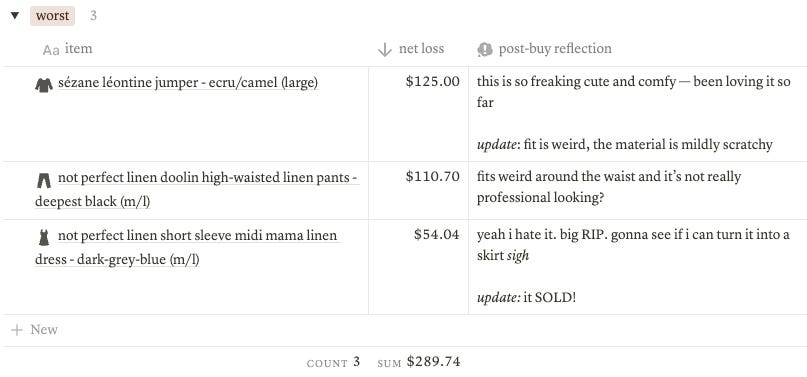




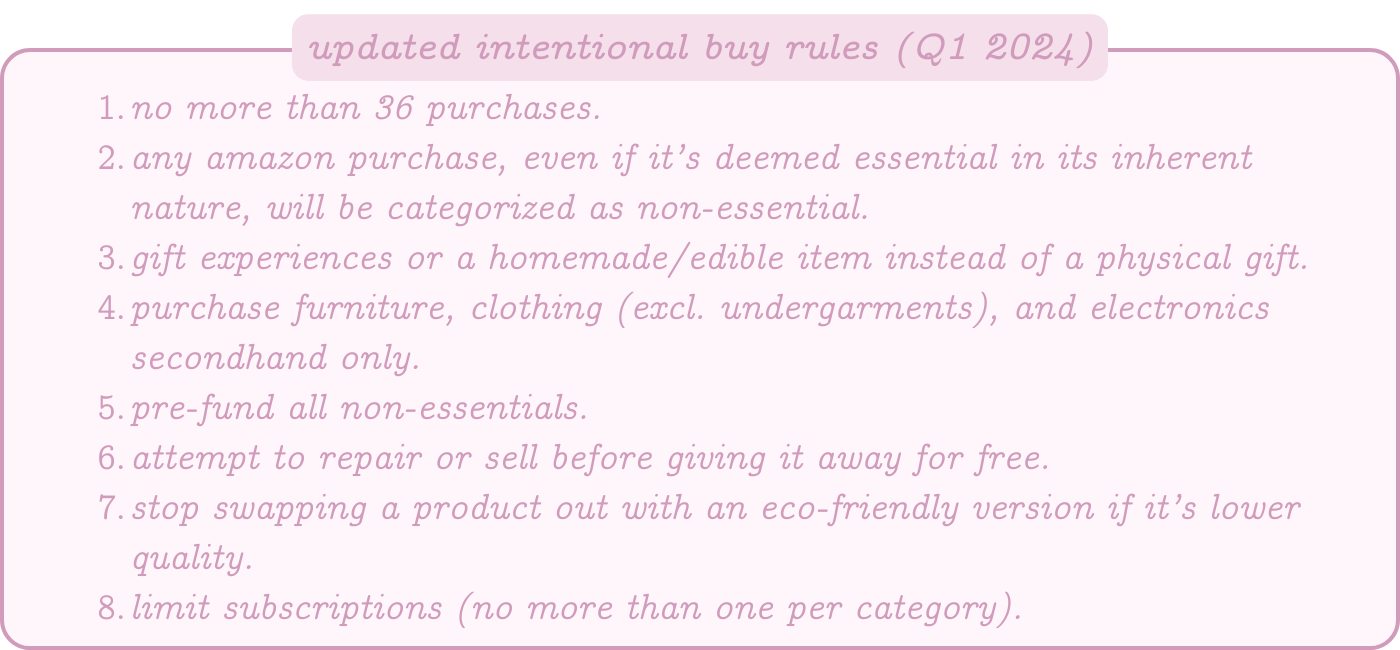



Thank you for posting this interesting breakdown! I came over here because you mentioned "low buy/intentional buy" on one of your instagram posts and I got curious. A few thoughts (sorry it's kinda long):
Since you work in academia, see if there’s a local online buy/sell marketplace for your uni. Those professional clothes that don’t fit you might be perfect for a grad student’s job interview!
I love the self-reflection you’re doing about your clothes. I’ve also been trying to re-learn my shopping habits and be more intentional about clothes that fit MY body and my lifestyle.
Thrifting Advice: Learn what types of clothes are "easy wins" for your body shape and search for those. Are there cuts or fabrics that always look at least decent for you? Or can you tell from an online photo whether a certain type of shirt will look good or not? (Also sweaters/jackets, easy to try on over your normal clothes, but check the washing instructions).
Don't go after the hard-to-fit items in the hopes of finding a rare gem! If you’re like me and have to try 4 styles of jeans in 3 sizes each to find the one that doesn’t make you look like a potato? Go to a large in-person clothing store with a wide size-range. Then when you find the perfect brand/style/size combo, wear it for a week, then come back and buy 4 identical ones before they go out of fashion and vanish! :D (Or maybe check online thrift stores or ebay for that specific style?)
Avoiding Amazon: Sadly it can be difficult, but here’s my usual strategy, maybe it'll help?
1) Make a good faith-effort to find it locally
2) Buy online-for-store-pickup from a chain that has local stores (like Target)
3) Buy direct from manufacturer or from an online small business that you want to support
4) If none of those are doable ... sigh, Amazon it is but at least we tried!
two things:
-I LOVE that you use Notion to track spending because I do, too 🤓
-I love seeing your investments in quality clothes. I need to start doing that…I’m all too quick to buy something cheap just to have something “new,” so I try to stick to thrifting/secondhand for now. 👗